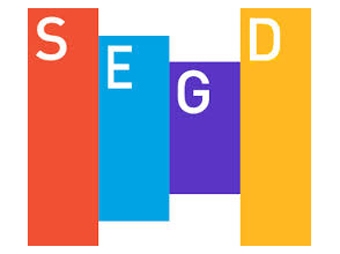In a move that acknowledges the role of experience, new media, and technology in the future of design, SEGD—the multidisciplinary design community whose members create experiences that connect people to place—has added “Experiential” to its descriptor and mission.
SEGD’s Board of Directors recently voted to change SEGD’s descriptor from Society for Environmental Graphic Design to Society for Experiential Graphic Design.
“This change recognizes the transformation our design discipline has been undergoing for years,” says Amy Lukas, President of SEGD and Partner at Infinite Scale. “With the addition of the word ‘Experiential,’ we have broadened the description of what we represent to express the much-expanded scope of work that our members have already been doing for the past 10 years.”
SEGD’s mission statement was changed in early 2013 to reflect the importance of experience design to the discipline. Coupled with the new mission statement, the change in SEGD’s description reflects the fact that “while it is still graphic communication that holds all of the practitioners in this field together, it is the creation of experiences that sets our members apart from print communication or website designers.” says past President Peter Dixon (Prophet).
Lukas says the word “environmental” has taken on a different context today than in 1973, when the founders of SEGD first gathered to share best practices about a new discipline rooted in architectural signage. With the advent of the sustainability movement, SEGD members have often discussed the potential for changing the association’s descriptor to better reflect the evolution of the discipline.
“Today, the scope of environmental graphic design encompasses ever-more complex projects and integrates new media and digital technologies,” says Lukas. “Thanks to these technologies and the Internet, designers can add layers of content and enhanced information, connecting people with the history and ambience of the space as well as creating a sense of place and helping them find their way. In this new era, both are possible and more often than not, both are demanded by clients.”
SEGD’s founders and past presidents wholeheartedly support the change.
“This is a wonderful example of an organization that recognizes and embraces change,” says John Berry, an SEGD founder who is now executive director of Design West Michigan. “Such a need was the genesis for the original creation of SEGD. So, this very good move is right in keeping with the philosophical/professional base.”
Co-founder Richard Burns (the GNU Group), says the change reflects the creative shifts that have been occurring in the field. “The entire profession is embracing the dramatic changes that have come to our profession and all of our members are reaping the opportunities for creative expression that come with experiential design. Changing the name makes all the sense in the world.”
“The impact of new media will totally transform the definition of environmental design in the next few years,” says Patrick Gallagher (Gallagher & Associates), past SEGD president. “There is not a design firm in our industry that will not look completely different in the next five years, and those who don’t realize it will find themselves unprepared to meet the demands of future communications.”
SEGD was established in 1973 as a professional community for designers creating architectural signage. In the ensuing four decades, SEGD has extended beyond its roots in signage to encompass a broad spectrum of visual communications in the built environment, from wayfinding to branded environments, public art, and exhibition design.
Clive Roux, SEGD’s CEO, says the integration of digital technologies into the built world will continue to significantly impact the skill sets and project teams required for experiential graphic design projects.
“Static visual communications work much like print, as a one-way controlled process that delivers a message at a precise point to help guide you in the environment. Digital technologies bring the potential for expanding from one-way instructional communication to the delivery of content and a two-way dialogue between the user and the technologies,” he notes. “Treated in a sensitive way, through design, it holds the potential to significantly improve the physical experience.”
“With their strong foundational skills in multidisciplinary collaboration, information design, and user-centered design, environmental graphic designers are in the best position to create a compelling interface between people and place,” he adds. “Our new mission and focus underscore the trajectory they are already traveling.”











